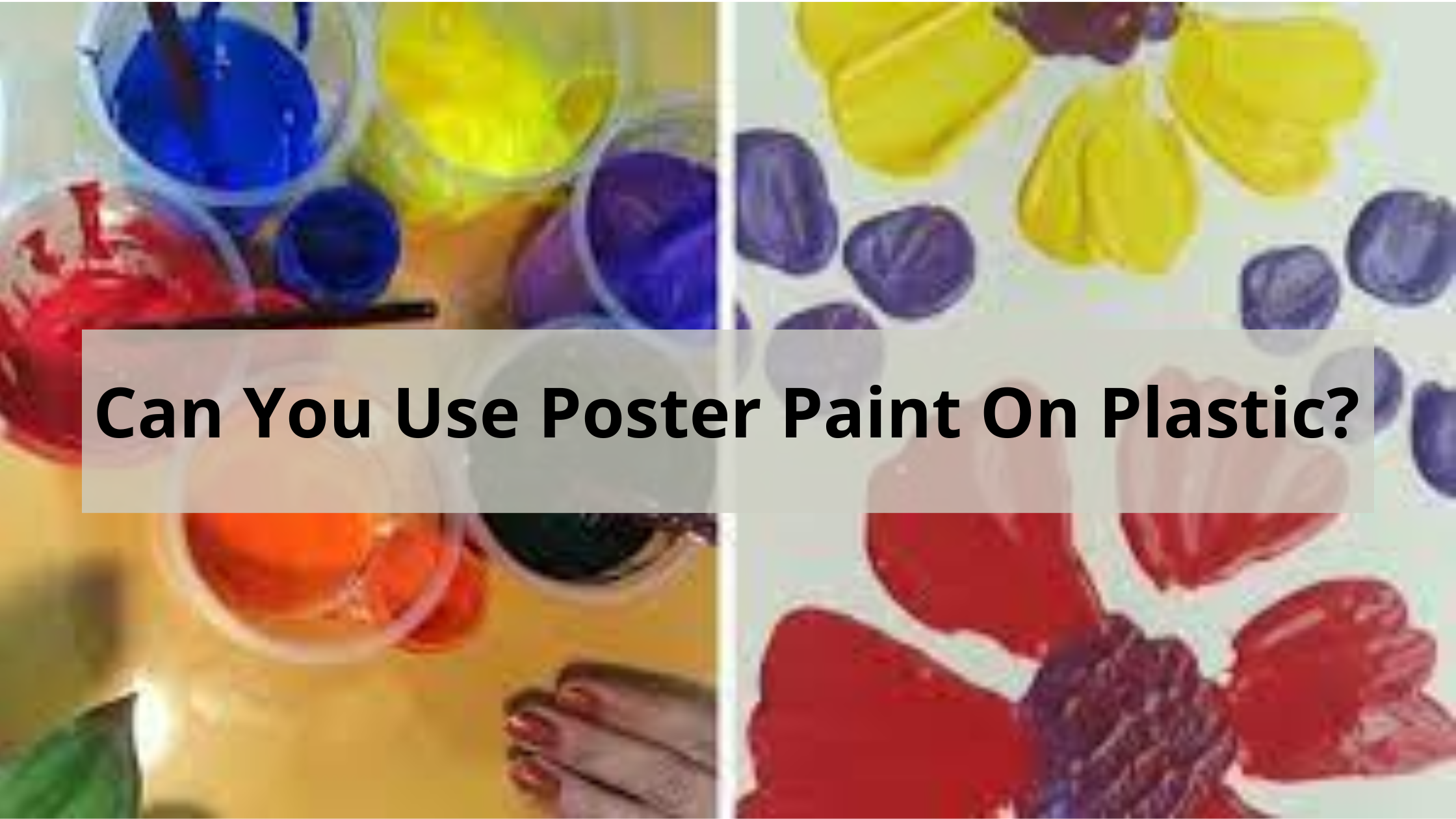These days, plastic is essentially everywhere. We have plastic furniture, decorations, mugs, phone cases, and other items. all made from various plastic materials.
It is difficult to find a part of our lives that is free of plastic. Plastic can’t be painted as easily as wood or other porous materials, though, so it can’t be as customized. The majority of paints don’t adhere to plastic well, which either causes discolorations or causes the paint to simply peel or crack off of the plastic after a short period of time.
Can You Use Poster Paint On Plastic?
Poster paint is water-based (and intended for use on paper or cards) and does not adhere well to non-absorbent plastic.
Plastic is not porous, so sanding down the shiny surface will help the paint stick. Paint the object: Use painter’s tape to mask off any areas you don’t want to be painted once the surface of your object has been thoroughly cleaned and dried. Read the instructions on your spray paint can before beginning to paint.
How to Paint Plastic?
Painting plastic surfaces is notoriously challenging. Wood is porous, whereas plastic paint adheres to the surface. Successful painting of plastic requires proper plastic preparation.
Prepare Your Item:
Warm water and mild dish soap should be used to thoroughly clean your item. Make certain that any grime or greasy residue is removed. Rinse thoroughly with clean water and pat dry with a soft cloth or towel. Allow drying after wiping down the entire surface with rubbing alcohol.
Set your item in the center of a drop cloth or old sheet in a well-ventilated area.
Remove any and all shiny surfaces from your item with a fine-grit sandpaper. To avoid scratching the surface, avoid pressing too hard. Because plastic is nonporous, removing its shiny surface will aid in the adhesion of your paint. Remove all dust from the sanding process with a soft, clean brush or cloth.
Paint Your Item:
Once your object’s surface is completely clean and dry, use painter’s tape to mask off any areas you don’t want to be painted.
Read the instructions on your spray paint can before you begin painting. In general, shake the can thoroughly before beginning and between applications.
Do a test spray on a piece of cardboard, newspaper, or your drop cloth to ensure you have a good can of paint or that the color is correct.
To use, point the nozzle at your object and spray a light, thin layer of paint on it. Your object should not be completely covered by this first layer. Allow each layer to dry for a few minutes before adding the next. It should take several thin, even layers to refresh the color of your item without over-painting.
Allow your item to fully dry before displaying or using it.
How to Paint Plastic?
The right paint is crucial for successfully painting plastic, but it is not the only element that must be present. Even though we don’t actually need a primer, the surface still needs to be properly cleaned before we can paint it. If not, the paint may not adhere properly.
Paint will only adhere to plastic if the surface has been properly prepped, in general. Before applying any paint, the plastic surface must be cleared of dust and debris and ideally sanded with a fine-grit sandpaper. Painting plastic requires the use of specialized paint.
How to Permanently and Properly Seal Paint on Plastic?
You might want to think about protecting your freshly painted walls afterward. You might be surprised to learn that sealing your painted plastic after the painting is not always necessary.
Paint on plastic doesn’t generally need to be sealed unless additional protection is needed. This is the case, for instance, if the item is easily scratchable. Painted plastic will receive an additional layer of defense against scuffs, water, and other elements from a clear acrylic sealer.
Is Primer Really Required Before Painting Plastic?
Typically, regular paint that ordinarily wouldn’t adhere to plastic doesn’t require a primer when painting plastic. Acrylic or latex paint, for instance. However, if specific paints for plastic are used, a plastic surface does not need to be primed.
To achieve an even smoother and more vibrant finish, you can use a primer before painting your plastic item with one of the suggested paints for plastic.
Related Questions
How do I seal paint onto plastic?
Your freshly painted plastic surface is given an additional layer of protection by a clear acrylic sealer. Although it’s not required, using a sealer can make the results more durable, especially if you’re painting an outdoor object. To make the job simpler, you can purchase a spray sealer.
Is it possible to paint metal on plastic?
It can be challenging to select the proper paint for a project. Fortunately, painting plastic and metal with the same paint is a fairly simple process. Although some paints have trouble adhering to different materials, such as metal, wood, or plastic, there is a leveler: paint primer.
Does nail polish adhere to plastic?
However, nail polish in general is not regarded as long-lasting paint on any kind of plastic. It’s not intended to last for a long time and is quite unstable. I wouldn’t paint the tiara with nail polish if you have sentimental value in it.
Conclusion
It is not easy to paint poster paints on plastic as it is a porous material so the paint will not stick to the surface properly. However, with the use of sealant, desired results can be achieved.

Shanzae Solangi is a multi-talented artist with a passion for writing and painting. Her artistic creations are a reflection of her unique vision and her love for all things creative. With her words and her art, she aims to inspire and captivate her audience, bringing beauty and meaning to the world around us.

